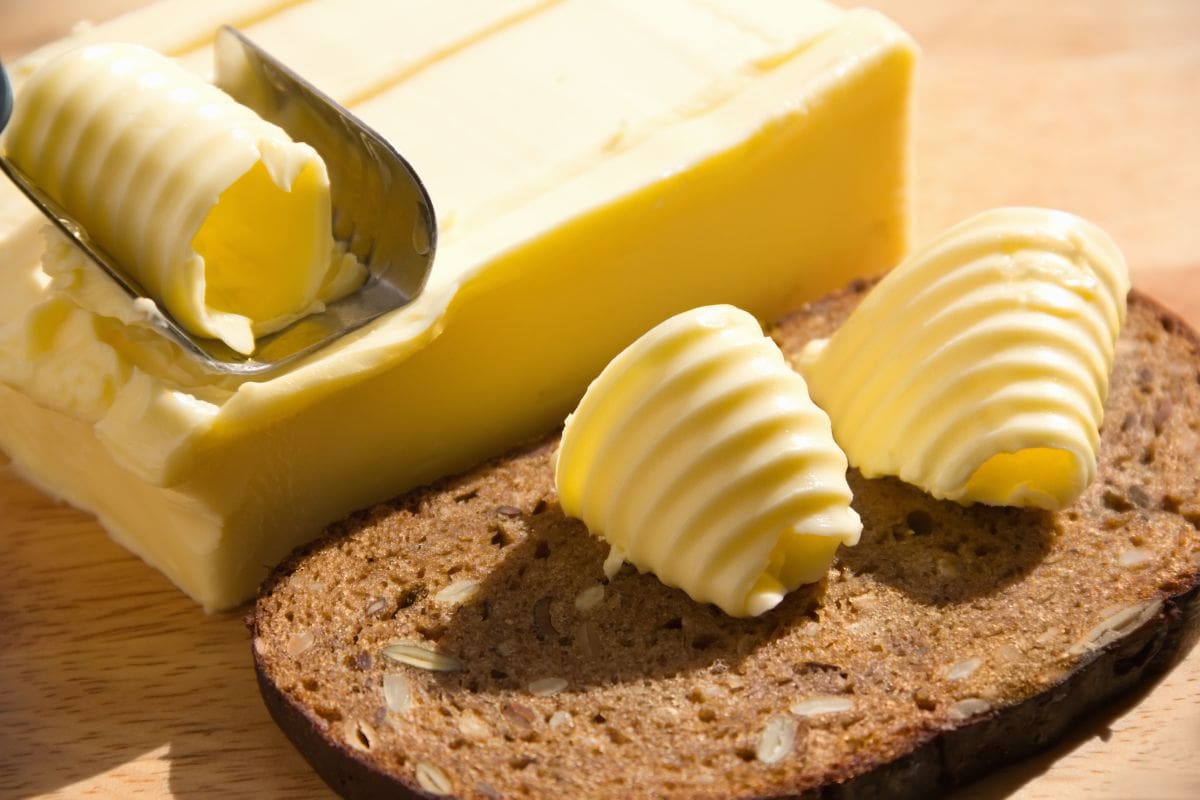Can you freeze butter? The answer is quite simply ‘yes!’. You can freeze butter successfully for up to 12 months. Simply wrap it tightly in its original packaging or foil to prevent freezer burn, then pop it in a freezer-safe bag.
Whether you’re a keen baker preparing for the festive season or simply eager to reduce food waste, knowing how to freeze butter properly means you’ll always have that golden, creamy goodness to hand. Join us as we explore the safe and proper way to freeze butter.
Table of Contents
Can You Freeze Butter?
‘Can you freeze butter?’ is a question we hear time and again here at Trewithen Dairy, especially when our customers spot a brilliant offer on their favourite Cornish butter and wonder if they can stock up without worry.
Freezing butter is one of the easiest and most effective ways to extend its life while preserving all that golden, buttery goodness we love at Trewithen Dairy. The process couldn’t be simpler, and when done properly, your butter will taste just as delicious as the day you bought it.
Both salted and unsalted butter freeze beautifully. In fact, butter’s high fat content makes it particularly well-suited to freezing. Unlike some dairy products with higher water content, butter won’t separate or lose its luxuriously smooth texture when frozen and thawed correctly.
The secret to butter freezing success? Proper wrapping and storage. By protecting your butter from air exposure and freezer burn, you’ll preserve that distinctive buttercup yellow colour and rich, creamy flavour that makes Trewithen butter so special.

Why Freeze Butter?
Freezing butter is a brilliant way to ensure you always have quality butter ready when you need it. Here at Trewithen Dairy we know that life gets busy, and running out of butter at a crucial moment (like when you’re halfway through a baking recipe!) is never ideal. Here’s why keeping a stash of frozen butter makes perfect sense.
Stock Up Without Worry
There’s something reassuring about knowing your freezer holds a good supply of quality butter. Whether you’re preparing for a family gathering or simply like to be organised, freezing butter means you can buy in bulk without any worries about it going off.
Our Cornish butter has a generous shelf life in the fridge already, but freezing extends this even further. No rushing to use it up, no waste, just butter ready and waiting when you need it.
Make the Most of Special Offers
When you spot quality butter on offer, there’s no need to hold back. Stock up when the price is right, pop the extras in the freezer, and you’ve made a wise, thrifty choice that your future self will thank you for.
Always Have Quality Butter to Hand
Nothing derails a recipe quite like discovering you’ve run out of butter. Whether it’s that perfect Sunday morning when you fancy homemade pancakes, an unexpected guest arriving for tea and scones, or a spontaneous baking session with the children, having frozen butter means you’re always prepared.
The beauty of frozen butter is that it’s remarkably versatile. Need it soft for spreading? Defrost it overnight in the fridge. Using it for pastry? It can go straight from freezer to recipe in some cases. That luxuriously smooth Cornish butter we’re so proud of at Trewithen is ready whenever inspiration strikes – and that’s a lovely feeling to have.

How to Freeze Butter Properly
Freezing butter is wonderfully straightforward. With just a few simple steps, you can ensure your butter stays fresh, flavourful, and ready to use whenever you need it. Here’s our tried-and-tested method for freezing butter properly.
Keep It Well Wrapped
The key to successfully freezing butter is protecting it from air exposure. Butter is brilliant at absorbing flavours and odours from its surroundings – which is brilliant when you’re making garlic herb butter, but not so marvellous when it picks up the scent of last week’s fish pie from the freezer!
If your butter is still in its original wrapper and unopened, you’re already halfway there. The wrapping that Trewithen butter comes in provides a good first layer of protection. However, for the best results, we’d recommend adding an extra barrier.
Wrap the packaged butter tightly in kitchen foil or place it inside a freezer-safe bag, squeezing out as much air as possible before sealing. This double-layer approach prevents freezer burn – those dry, discoloured patches that can affect texture and taste – and keeps your butter in pristine condition.
If you’ve already opened your butter, simply wrap any unused portion tightly in foil or cling film, then pop it into a freezer bag. Label it with the date so you know when it went in, and you’re all set.

Best Storage Methods
There’s more than one way to freeze butter, and the best method depends on how you plan to use it. Here are our favourite approaches:
Original Packaging Method
The simplest option: keep unopened butter in its box or wrapper, place it inside a freezer bag, seal well, and freeze. This works beautifully for whole blocks and requires absolutely no fuss.
Portion Control Method
If you often need smaller amounts, consider cutting your butter into portions before freezing. Slice it into tablespoon-sized pieces or quarters, wrap each portion individually in foil or baking parchment, then store all the wrapped pieces together in a freezer bag. This means you can grab exactly what you need without defrosting the entire block.
Airtight Container Method
For extra protection, especially if you’re freezing butter for several months, place your wrapped butter inside a rigid, airtight freezer container. This adds another layer of defence against odours and freezer burn, and makes stacking in a full freezer much easier.
Whichever method you choose when freezing your butter, always label it with the freezing date. Even though frozen butter lasts for ages, it’s helpful to know when it went in so you can use the oldest first.

Can You Freeze Butter? Here’s Our Top Tips
After years of crafting quality dairy here at Trewithen, we’ve picked up a few tricks for freezing the best butter in the UK. Here are our best tips for freezing butter successfully:
- Freeze it fresh – Pop your butter in the freezer as soon as possible after buying it, ideally well before the best-before date. The fresher it is when frozen, the better it’ll taste when defrosted.
- Keep it away from strong smells – Store frozen butter away from pungent foods like curry, fish, or garlic. Even well-wrapped butter can pick up strong odours over time, so a dedicated section of your freezer is ideal.
- Don’t overcrowd – When first freezing butter, make sure there’s space around each block for air to circulate. This helps it freeze quickly and evenly. Once fully frozen, you can stack them more closely if needed.
- Consider your freezer type – If you have a frost-free freezer, your butter may dry out slightly faster than in a manual-defrost model. Extra-thorough wrapping is especially important in frost-free freezers.
- Freeze salted and unsalted butter separately – If you keep both types to hand, store them in separate bags or containers and label them clearly. This saves you from accidentally using salted butter in a recipe that calls for unsalted (or vice versa).
- Use freezer bags with confidence – Good quality, thick freezer bags are worth their weight in gold. They provide excellent protection and take up less space than rigid containers, making them perfect for butter storage.
Following these straightforward steps means your butter will be ready and waiting whenever you need it. It really is that simple.
How Long Can You Freeze Butter?
The answer depends on whether you’re freezing salted or unsalted butter, but either way, you’ll be pleased to know that butter freezes remarkably well for quite some time.
Salted Butter
Our Cornish salted butter, with its touch of sea salt, can be safely frozen for up to 12 months. The salt acts as a natural preservative, which is why salted butter has a slightly longer freezer life than its unsalted counterpart.
For the very best quality and flavour, we recommend using frozen salted butter within 6-9 months. However, it’s perfectly safe and tasty beyond this if stored correctly. This gives you plenty of time to work through your freezer stash without any rush.

Unsalted Butter
Unsalted butter doesn’t have the preserving benefit of salt, which means its freezer life is slightly shorter – but it’s still impressively long. You can safely freeze unsalted butter for 6-12 months, with optimum quality maintained for around 4-6 months.
Whether you choose our salted or unsalted variety, both freeze beautifully and will taste wonderfully fresh when defrosted properly.
Spreadable Butter
While you can technically freeze our spreadable butter, we wouldn’t particularly recommend it. Unlike our pure salted and unsalted butter, our spreadable variety contains sunflower oil and water to give it that perfectly soft, easy-to-spread consistency straight from the fridge. When frozen and thawed, the oil and water can separate slightly, affecting the smooth texture that makes it so lovely to use.
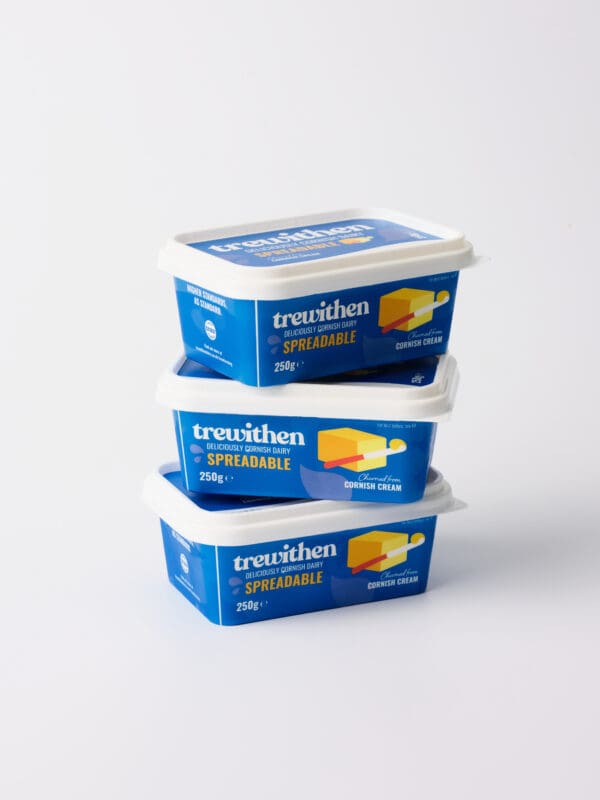
When to Use Frozen Butter By
While frozen butter can technically last up to a year, there are a few things worth knowing to ensure you get the very best from your frozen stash:
- Check the best-before date first – Always freeze your butter well before its best-before date. The quality of your defrosted butter can only ever be as good as it was when it went into the freezer.
- First in, first out – This is why labelling with dates matters. Use your oldest frozen butter first, rotating through your supply as needed. It’s a simple habit that ensures nothing sits in the freezer for too long and everything gets used at its best.
- Trust your senses – When you defrost butter that’s been frozen for several months, give it a quick check. It should look golden and smell fresh and creamy. If it’s developed any off odours or discolouration, it’s probably past its best.
- Once defrosted, use within a month – After you’ve thawed your frozen butter, treat it as you would fresh butter. Keep it refrigerated and use it within 3-4 weeks for the best flavour and quality. Don’t refreeze butter that’s already been frozen and thawed, as this can affect both texture and taste.

How to Defrost Frozen Butter
So, you’ve frozen your butter successfully – brilliant! But now comes the question: how do you defrost frozen butter properly? The good news is that thawing frozen butter is just as straightforward as freezing it. The method you choose depends on how much time you have and what you’re planning to make.
The Overnight Method (Best for Quality)
For the very best results and to preserve all that golden, creamy goodness, slow and steady wins the race. This is our recommended approach at Trewithen Dairy, especially if you want butter that’s perfect for spreading.
Here’s how to do it:
Simply transfer your frozen butter from the freezer to the fridge the night before you need it. Pop it on a plate or in a small container (to catch any condensation), and leave it to defrost slowly in the refrigerator.
A standard 250g block of butter will be completely thawed and ready to use within 6-7 hours, though overnight is ideal. This gentle defrosting method means your butter retains its smooth texture and rich flavour perfectly – you honestly won’t be able to tell it was ever frozen.
Once defrosted in the fridge, if you need your butter at room temperature for baking or spreading, take it out about 30-60 minutes before you need it. It’ll soften naturally without melting. For more tips on getting butter to the perfect spreading consistency, take a look at our guide on how to make butter spreadable.
Top tip: If you’ve frozen butter in portions, you’ll only need to defrost exactly what you need, leaving the rest safely in the freezer. This is one of the real advantages of knowing you can freeze butter – you’re never defrosting more than you need to.
The Quick Grate Trick
Sometimes life doesn’t give you the luxury of planning ahead. Perhaps you’ve woken up craving homemade scones, or you’re halfway through a recipe when you realise you’re out of soft butter. Don’t worry – we’ve got you covered with this brilliantly clever trick.
The grating method:
Take your frozen butter straight from the freezer and use a standard box grater (the side with the larger holes works best). Grate the amount of butter you need directly onto a plate or a piece of baking parchment.
Because the butter is now in tiny shreds with lots of surface area, it softens remarkably quickly – often within just 5-10 minutes at room temperature. You can use this grated butter immediately for baking, or wait a few minutes for it to become spreadable.
Why this works so well:
This method is particularly useful for pastry-making, where you actually want cold butter that’s easier to incorporate into flour. The grated frozen butter mixes through beautifully, creating wonderfully flaky results in pies, scones, and biscuits. It’s a technique professional bakers use all the time, and now you’re in on the secret!
Bonus tip: Grating frozen butter is also easier and less messy than trying to grate soft butter, so some people actually prefer to freeze butter specifically for this purpose.
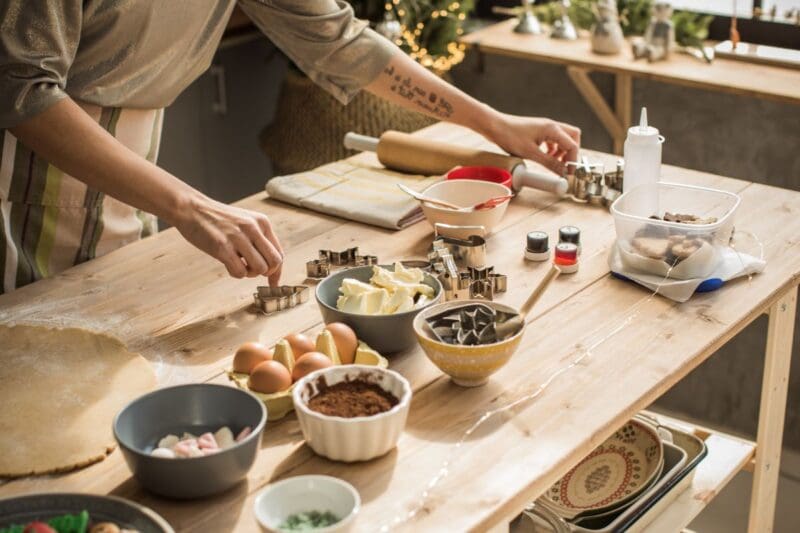
What Not to Do When Defrosting Butter
While there are several good ways to defrost butter, there are also a few methods we’d strongly recommend avoiding. These might seem like time-savers, but they can compromise the quality of your butter – and after you’ve taken the care to freeze butter properly, that would be a shame.
Don’t use the microwave
It’s tempting, we know, but microwaving frozen butter is a recipe for disaster. Butter defrosts incredibly unevenly in the microwave – you’ll end up with a melted puddle in some spots while other bits remain rock solid. Even on the defrost setting, it’s nearly impossible to get it right.
Melted butter behaves completely differently in recipes than softened butter. If your recipe calls for soft, room-temperature butter, melted butter simply won’t work and will affect your final results. Save the microwave for reheating your tea instead.
Don’t defrost at room temperature for too long
While it’s fine to finish the defrosting process at room temperature (especially if you’ve started in the fridge), leaving butter out on the counter for hours – particularly in a warm kitchen – isn’t ideal. Not only can it become too soft and oily, but prolonged time at room temperature can affect food safety, especially with unsalted butter.
If you’ve forgotten about butter left out overnight, it’s probably fine to use, but it’s not the best practice. Can you freeze butter again after it’s been defrosted? The answer is no – refreezing previously frozen butter affects both texture and flavour, so only defrost what you’ll use.
Don’t rush the process with hot water
You might have heard about submerging wrapped butter in warm water to speed up defrosting. While this can work in a pinch, it’s risky. The outer layer can become too soft or even start to melt while the centre remains frozen. The temperature difference can also affect the butter’s texture, making it slightly grainy.
If you’re really in a rush and haven’t got time for the overnight method or grating trick, your best bet is to cut the frozen butter into small cubes and let them sit at room temperature for 20-30 minutes. It’s not quite as quick as other shortcuts, but it preserves the quality much better.
The golden rule: Patience with butter pays off. Whether you’re defrosting overnight in the fridge or using the grating method, taking a little care means your Trewithen butter will taste just as delicious as the day you bought it.

Using Frozen Butter
One of the wonderful things about knowing you can freeze butter is discovering just how versatile frozen butter can be. You don’t always need to wait for it to defrost completely – in fact, there are times when using butter straight from the freezer actually gives you better results. Here’s how to make the most of your frozen butter stash.
Straight from the Freezer for Baking
Frozen butter can go directly into certain recipes without any defrosting at all. In fact, some bakers prefer it this way, and once you understand why, you might too. Knowing you can freeze butter opens up a world of possibilities in the kitchen!
Where frozen butter shines:
Recipes that call for “cold butter” – like scones, biscuits, shortcrust pastry, and crumble toppings – are perfect candidates for using butter straight from the freezer. The reason? When cold butter hits the heat of the oven, it creates pockets of steam that give you those gloriously flaky layers everyone loves.
Try this at home:
Next time you’re making a crumble topping for an apple pudding or rhubarb crisp, grate frozen butter directly into your flour and sugar mixture. Rub it together quickly with your fingertips – the butter stays cold and creates the most wonderfully crisp, golden topping. It’s one of those simple techniques that makes a real difference to your baking.
This is particularly brilliant when you’re baking in a warm kitchen during summer. Your butter stays cold right up until the moment you need it, rather than turning soft and greasy while you’re still preparing your ingredients.
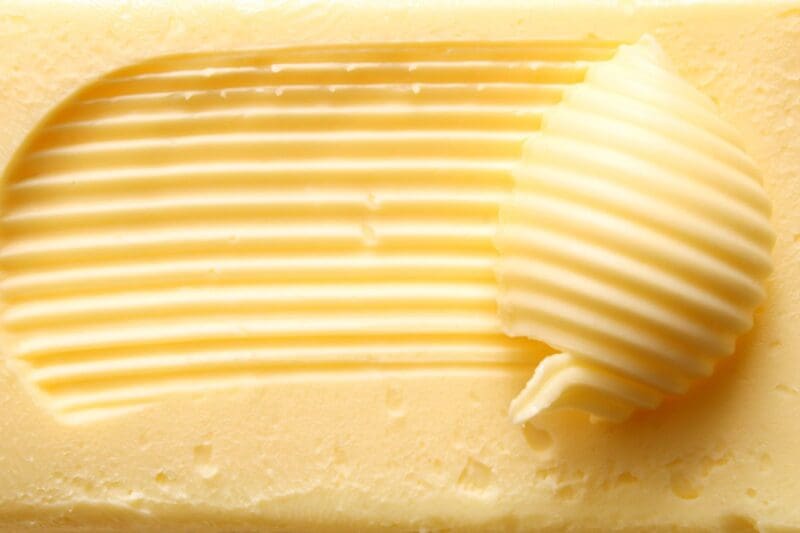
When You Need Soft Butter
Of course, not every recipe calls for cold butter. Many cakes, biscuits, and buttercream icings need soft, room-temperature butter that creams beautifully with sugar. The good news? Your frozen butter can absolutely deliver this too – you just need to plan slightly ahead.
The ideal approach:
For recipes requiring soft butter, the overnight fridge method we mentioned earlier is your friend. Transfer your frozen butter to the fridge the evening before your baking session. The next morning, take it out and leave it at room temperature for 30-60 minutes (depending on how warm your kitchen is).
You’ll know your butter is at the perfect consistency when you can press it gently with your finger and it leaves an indent without your finger sliding straight through. This is the sweet spot for creaming butter with sugar – it’s soft enough to incorporate air, creating light, fluffy cakes and biscuits, but not so soft that it’s greasy or melted.
Top tip: If you’re making buttercream or compound butters (like garlic and herb butter), slightly cool room-temperature butter actually works better than very soft butter. It holds its shape beautifully and creates a more stable, professional-looking result.
Perfect for Pastry
If there’s one area where frozen butter truly excels, it’s pastry-making. Understanding this can transform your baking, and it’s one of the reasons we’re such advocates for keeping butter in the freezer.
Why frozen butter makes exceptional pastry:
The secret to flaky, melt-in-the-mouth pastry is keeping the butter as cold as possible for as long as possible. When you work with frozen butter, you’ve got a real advantage. The cold fat creates distinct layers in the dough, and when these hit the oven’s heat, they release steam that pushes the layers apart – resulting in that beautiful flakiness we all love in good pastry.
Our Cornish butter is particularly suited to pastry work. That rich, golden quality creates pastry with excellent flavour and colour, and freezing it doesn’t diminish these characteristics one bit.
Perfect recipes for frozen butter:
- Rough puff pastry – Frozen butter grates beautifully and creates those classic layers
- Shortcrust pastry – Whether sweet or savoury, frozen butter works wonderfully
- Cornish pasties – Use frozen butter for authentic, flaky pastry every time
- Sweet pie crusts – Apple pies, fruit tarts, mince pies – all benefit from frozen butter
- Cheese scones – Grated frozen butter mixed with cheese creates the lightest scones
A word about handling: When working with frozen butter for pastry, keep your hands cool and work quickly. If you’re making pastry on a warm day, you might even chill your mixing bowl in the fridge for 10 minutes first. Every little bit helps when you’re trying to keep that butter cold. Once your pastry is made, pop it in the fridge for 30 minutes before rolling. This rest time lets the gluten relax and gives the butter time to firm up again, making the pastry easier to roll and even flakier when baked.
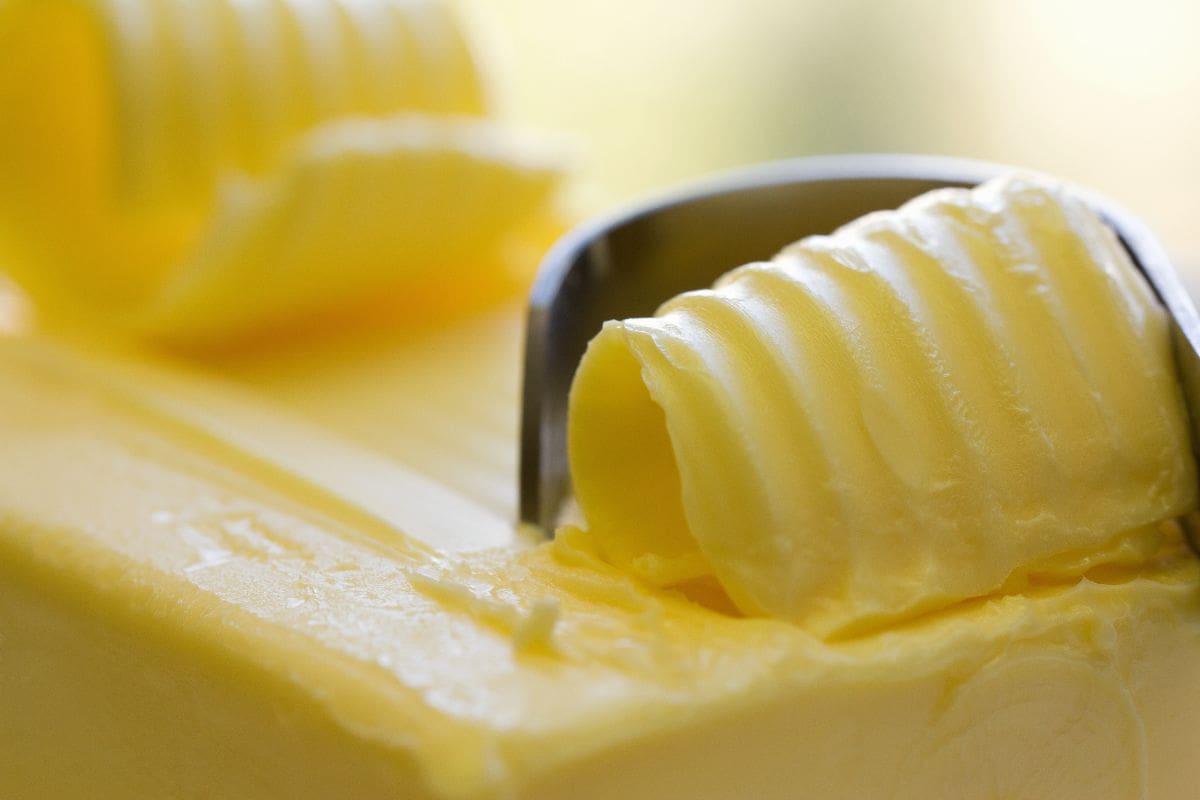
Making Quality Cornish Butter Last
At Trewithen Dairy, we’ve been crafting delicious Cornish butter since 1994. Over the years, we’ve learned that quality butter deserves to be treated with care. Freezing butter properly is about ensuring that every golden pat of butter tastes as wonderful as it should. In a world where reducing food waste matters more than ever, that feels like doing things the right way.
So next time you spot our Cornish butter on the shelves, don’t hesitate to pick up an extra pack or two. Pop them in the freezer with confidence, knowing they’ll be ready and waiting whenever you need them.
Ready to stock up on quality Cornish butter? Find out where to buy Trewithen products at a stockist near you, or explore our full range of delicious Cornish butter. Your freezer (and your taste buds) will thank you.
Looking for inspiration on how to use your butter? Browse our collection of delicious butter recipes and discover new ways to enjoy that golden, creamy goodness.
Can You Freeze Butter? and Other Frequently Asked Questions
Is butter good after being frozen?
Yes, properly frozen butter tastes just as good as fresh, maintaining its rich flavour, creamy texture, and golden colour when stored correctly in the freezer.
What is the best way to freeze butter?
Keep butter in its original wrapper, place it inside a freezer-safe bag with excess air removed, label it with the date, and store it away from strong-smelling foods.
How do you defrost frozen butter?
The best method is to transfer frozen butter to the fridge overnight (6-7 hours), though you can also grate it frozen for immediate use or cut it into small pieces to soften at room temperature in 20-30 minutes.
Can you freeze butter in its original packaging?
Yes, you can freeze butter in its original foil or paper wrapper, though we recommend placing it inside a freezer bag as well for extra protection against freezer burn and odours.
Can you refreeze butter?
No, you shouldn’t refreeze butter that’s already been frozen and thawed, as this affects both the texture and flavour – it’s best to only defrost what you’ll use.
Does butter get freezer burn?
Butter can develop freezer burn, which causes dry, discoloured patches if it’s not wrapped properly. Wrapping it tightly in foil and a freezer bag prevents this.
What’s the difference between freezing salted and unsalted butter?
Salted butter lasts longer in the freezer (up to 12 months) because salt acts as a natural preservative, while unsalted butter maintains best quality for 6-12 months.
